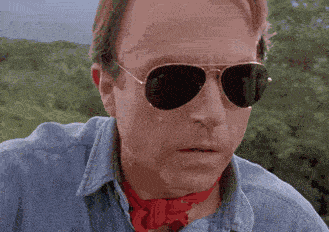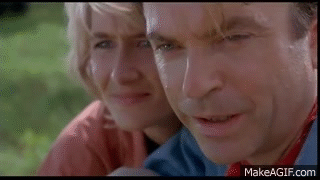Rumraket
Active Member
So I recently read a paper reporting what is possibly the most incredible and unexpected results into the study of the nature of the ribosome. It turns out the ribosome contains nucleotide sequences of all 20 tRNA molecules, several ribosomal proteins, RNA polymerases and a host of other entities. The authors speculate the ribosome itself might therefore constitute a vestige of a stage in the RNA world, where it was basically the first self-replicating genome of some kind of RNA based organism.
It is a curious fact to consider, that the ribosome is a large, mostly RNA-based molecular machine that "reads" RNA, as one would expect a putative primordial self-replicating RNA or RNA-polymerase would do. It is even more amazing to consider that this machine, in addition to containing the genes for it's own construction (basically that the genome IS the entity that replicates), also contain the genetic sequences that encodes the tRNA molecules. Seriously, what are the odds of that? Isn't that an amazing and almost unbelievable happenstance? That the ribosome itself contain the sequences for tRNA molecules carrying all 20 amino acids? Even now, 4 billion years removed from when these tRNA genes would have been active.
Even more amazingly, some of the proteins that coat the ribosome and aid it in it's translation of messenger-RNA, are themselves encoded in RNA nucleotide sequence, in the ribosomal RNA.
As if that wasn't enough, additional metabolic and replication-related enzymes and ribozymes are encoded in overlapping readingframes in ribosomal RNA. This literally boggles the mind. By looking at this single molecular machine and analyzing nucleotide sequences in detail, we are quite possibly looking at what used to be almost the entire genome of one of the very first stages of life in the RNA world. I used to think that any knowledge of how that RNA world looked and what kinds of genetic machinery was contained within it, was forever obscured by the erasing nature of the accumulating mutations of time and the gradual replacement and loss of these primordially essential components. Not so.
Additionally and related, two classes of protein enzymes are today involved in the translation system and the biosynthesis of proteins. A step in the translation of proteins involve the covalent linkage of amino acids to the tRNA molecules themselves. This step is catalyzed by the enzymes called aminoacyl-tRNA-synthetases, of which there are two classes (class I and II). Each class is divided into 10 unique enzymes, 20 in total, 10 in each class. Comparative genetics reveal that the 10 enzymes in each class are related to each other, so all 10 enzymes in each class converge on one ancestral aminoacyl-tRNA-synthetase enzyme. An ancestor that gave rise to all 10 enzymes in each class. Now comes the amazing part. The nucleotide sequence that encodes the amino acid sequence of the ancestor to the Class I aminoacyl-tRNA-synthetase, is the antiparallel DNA strand to the nucleotide sequence that encodes the amino acid sequence of the ancestor to the Class II aminoacyl-tRNA-synthetases.
So both classes of aminoacyl-tRNA-synthetases, Class I and II, 20 enzymes in total, was originally encoded by a single gene. The 3'-5' strand encoded the class I synthetase, and the 5'-3' encoded the class II synthetase. Let that fester in your skull for a while.
Read these papers, have your mind blown:
https://www.ncbi.nlm.nih.gov/pubmed/25500179
The ribosome as a missing link in the evolution of life.
Root-Bernstein M, Root-Bernstein R.
https://www.ncbi.nlm.nih.gov/pubmed/26953650
The ribosome as a missing link in prebiotic evolution II: Ribosomes encode ribosomal proteins that bind to common regions of their own mRNAs and rRNAs.
Root-Bernstein R, Root-Bernstein M.
https://www.ncbi.nlm.nih.gov/pubmed/26088142
Functional Class I and II Amino Acid-activating Enzymes Can Be Coded by Opposite Strands of the Same Gene.
Martinez-Rodriguez L, Erdogan O, Jimenez-Rodriguez M, Gonzalez-Rivera K, Williams T, Li L, Weinreb V, Collier M, Chandrasekaran SN, Ambroggio X, Kuhlman B, Carter CW Jr.

It is a curious fact to consider, that the ribosome is a large, mostly RNA-based molecular machine that "reads" RNA, as one would expect a putative primordial self-replicating RNA or RNA-polymerase would do. It is even more amazing to consider that this machine, in addition to containing the genes for it's own construction (basically that the genome IS the entity that replicates), also contain the genetic sequences that encodes the tRNA molecules. Seriously, what are the odds of that? Isn't that an amazing and almost unbelievable happenstance? That the ribosome itself contain the sequences for tRNA molecules carrying all 20 amino acids? Even now, 4 billion years removed from when these tRNA genes would have been active.
Even more amazingly, some of the proteins that coat the ribosome and aid it in it's translation of messenger-RNA, are themselves encoded in RNA nucleotide sequence, in the ribosomal RNA.
As if that wasn't enough, additional metabolic and replication-related enzymes and ribozymes are encoded in overlapping readingframes in ribosomal RNA. This literally boggles the mind. By looking at this single molecular machine and analyzing nucleotide sequences in detail, we are quite possibly looking at what used to be almost the entire genome of one of the very first stages of life in the RNA world. I used to think that any knowledge of how that RNA world looked and what kinds of genetic machinery was contained within it, was forever obscured by the erasing nature of the accumulating mutations of time and the gradual replacement and loss of these primordially essential components. Not so.
Additionally and related, two classes of protein enzymes are today involved in the translation system and the biosynthesis of proteins. A step in the translation of proteins involve the covalent linkage of amino acids to the tRNA molecules themselves. This step is catalyzed by the enzymes called aminoacyl-tRNA-synthetases, of which there are two classes (class I and II). Each class is divided into 10 unique enzymes, 20 in total, 10 in each class. Comparative genetics reveal that the 10 enzymes in each class are related to each other, so all 10 enzymes in each class converge on one ancestral aminoacyl-tRNA-synthetase enzyme. An ancestor that gave rise to all 10 enzymes in each class. Now comes the amazing part. The nucleotide sequence that encodes the amino acid sequence of the ancestor to the Class I aminoacyl-tRNA-synthetase, is the antiparallel DNA strand to the nucleotide sequence that encodes the amino acid sequence of the ancestor to the Class II aminoacyl-tRNA-synthetases.
So both classes of aminoacyl-tRNA-synthetases, Class I and II, 20 enzymes in total, was originally encoded by a single gene. The 3'-5' strand encoded the class I synthetase, and the 5'-3' encoded the class II synthetase. Let that fester in your skull for a while.
Read these papers, have your mind blown:
https://www.ncbi.nlm.nih.gov/pubmed/25500179
The ribosome as a missing link in the evolution of life.
Root-Bernstein M, Root-Bernstein R.
Abstract
Many steps in the evolution of cellular life are still mysterious. We suggest that the ribosome may represent one important missing link between compositional (or metabolism-first), RNA-world (or genes-first) and cellular (last universal common ancestor) approaches to the evolution of cells. We present evidence that the entire set of transfer RNAs for all twenty amino acids are encoded in both the 16S and 23S rRNAs of Escherichia coli K12; that nucleotide sequences that could encode key fragments of ribosomal proteins, polymerases, ligases, synthetases, and phosphatases are to be found in each of the six possible reading frames of the 16S and 23S rRNAs; and that every sequence of bases in rRNA has information encoding more than one of these functions in addition to acting as a structural component of the ribosome. Ribosomal RNA, in short, is not just a structural scaffold for proteins, but the vestigial remnant of a primordial genome that may have encoded a self-organizing, self-replicating, auto-catalytic intermediary between macromolecules and cellular life.
https://www.ncbi.nlm.nih.gov/pubmed/26953650
The ribosome as a missing link in prebiotic evolution II: Ribosomes encode ribosomal proteins that bind to common regions of their own mRNAs and rRNAs.
Root-Bernstein R, Root-Bernstein M.
Abstract
We have proposed that the ribosome may represent a missing link between prebiotic chemistries and the first cells. One of the predictions that follows from this hypothesis, which we test here, is that ribosomal RNA (rRNA) must have encoded the proteins necessary for ribosomal function. In other words, the rRNA also functioned pre-biotically as mRNA. Since these ribosome-binding proteins (rb-proteins) must bind to the rRNA, but the rRNA also functioned as mRNA, it follows that rb-proteins should bind to their own mRNA as well. This hypothesis can be contrasted to a "null" hypothesis in which rb-proteins evolved independently of the rRNA sequences and therefore there should be no necessary similarity between the rRNA to which rb-proteins bind and the mRNA that encodes the rb-protein. Five types of evidence reported here support the plausibility of the hypothesis that the mRNA encoding rb-proteins evolved from rRNA: (1) the ubiquity of rb-protein binding to their own mRNAs and autogenous control of their own translation; (2) the higher-than-expected incidence of Arginine-rich modules associated with RNA binding that occurs in rRNA-encoded proteins; (3) the fact that rRNA-binding regions of rb-proteins are homologous to their mRNA binding regions; (4) the higher than expected incidence of rb-protein sequences encoded in rRNA that are of a high degree of homology to their mRNA as compared with a random selection of other proteins; and (5) rRNA in modern prokaryotes and eukaryotes encodes functional proteins. None of these results can be explained by the null hypothesis that assumes independent evolution of rRNA and the mRNAs encoding ribosomal proteins. Also noteworthy is that very few proteins bind their own mRNAs that are not associated with ribosome function. Further tests of the hypothesis are suggested: (1) experimental testing of whether rRNA-encoded proteins bind to rRNA at their coding sites; (2) whether tRNA synthetases, which are also known to bind to their own mRNAs, are encoded by the tRNA sequences themselves; (3) and the prediction that archaeal and prokaryotic (DNA-based) genomes were built around rRNA "genes" so that rRNA-related sequences will be found to make up an unexpectedly high proportion of these genomes.
https://www.ncbi.nlm.nih.gov/pubmed/26088142
Functional Class I and II Amino Acid-activating Enzymes Can Be Coded by Opposite Strands of the Same Gene.
Martinez-Rodriguez L, Erdogan O, Jimenez-Rodriguez M, Gonzalez-Rivera K, Williams T, Li L, Weinreb V, Collier M, Chandrasekaran SN, Ambroggio X, Kuhlman B, Carter CW Jr.
Abstract
Aminoacyl-tRNA synthetases (aaRS) catalyze both chemical steps that translate the universal genetic code. Rodin and Ohno offered an explanation for the existence of two aaRS classes, observing that codons for the most highly conserved Class I active-site residues are anticodons for corresponding Class II active-site residues. They proposed that the two classes arose simultaneously, by translation of opposite strands from the same gene. We have characterized wild-type 46-residue peptides containing ATP-binding sites of Class I and II synthetases and those coded by a gene designed by Rosetta to encode the corresponding peptides on opposite strands. Catalysis by WT and designed peptides is saturable, and the designed peptides are sensitive to active-site residue mutation. All have comparable apparent second-order rate constants 2.9-7.0E-3 M(-1) s(-1) or ∼750,000-1,300,000 times the uncatalyzed rate. The activities of the two complementary peptides demonstrate that the unique information in a gene can have two functional interpretations, one from each complementary strand. The peptides contain phylogenetic signatures of longer, more sophisticated catalysts we call Urzymes and are short enough to bridge the gap between them and simpler uncoded peptides. Thus, they directly substantiate the sense/antisense coding ancestry of Class I and II aaRS. Furthermore, designed 46-mers achieve similar catalytic proficiency to wild-type 46-mers by significant increases in both kcat and Km values, supporting suggestions that the earliest peptide catalysts activated ATP for biosynthetic purposes.


